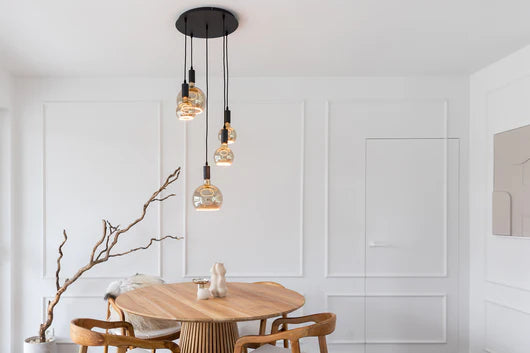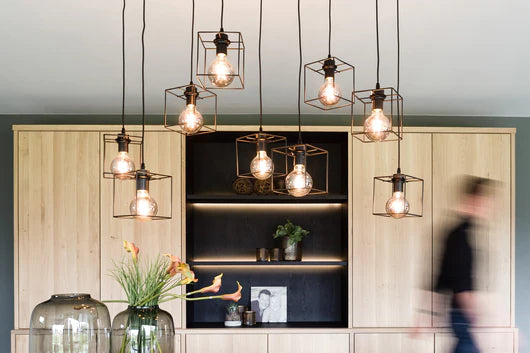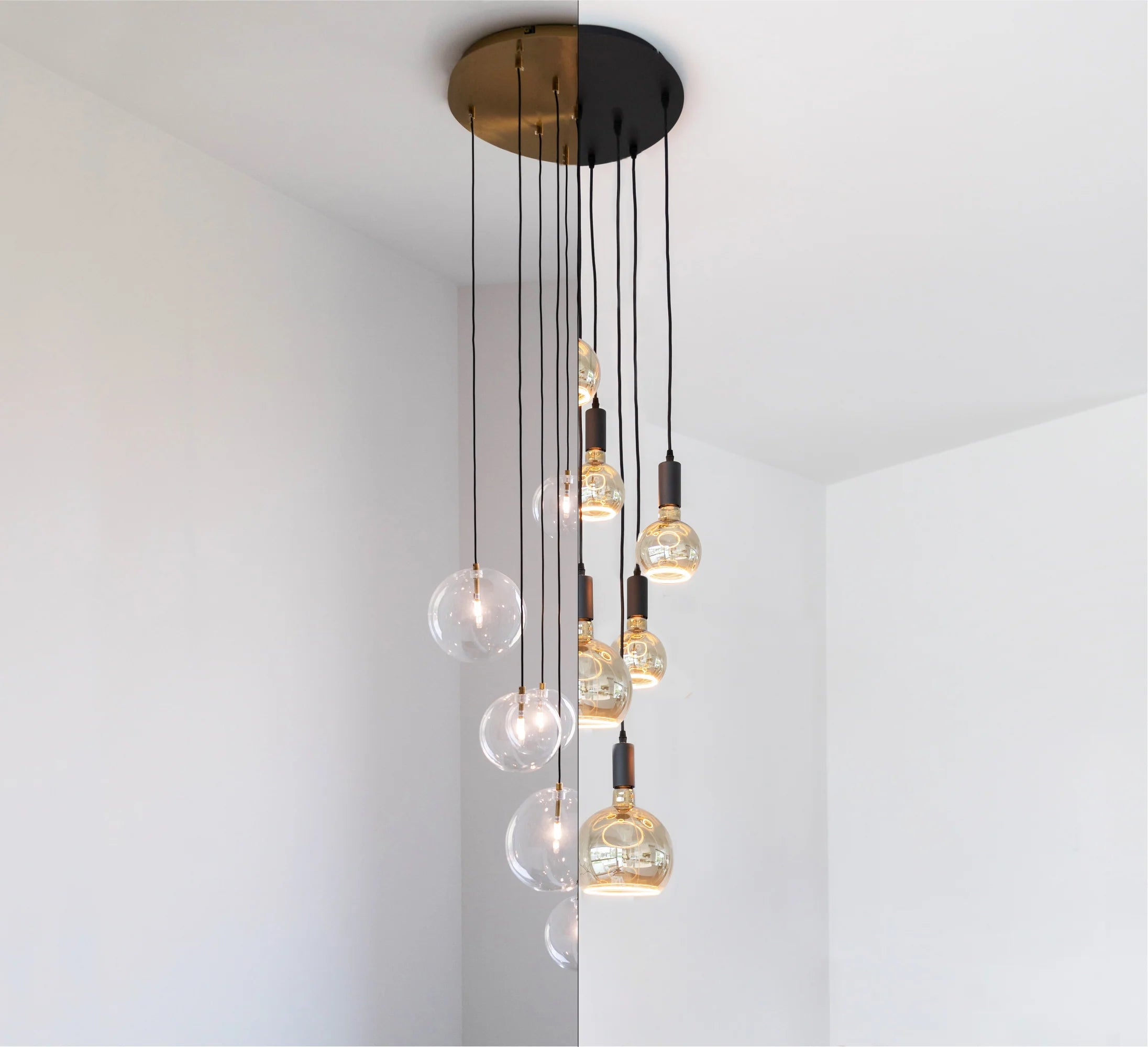

HOW TO CHOOSE THE RIGHT LIGHT SOURCE?
You may have chosen the most beautiful, the most original designer lamp... but it all hangs on choosing the right light source. To create the right mood, read a book without straining your eyes or chop vegetables without sunglasses, you need the right light source.
Start from the shape of your chosen lamp
Does your lamp have an open or transparent shape? If so, the light source will be visible so you should opt for a trendy model with a beautiful colour of glass and filaments. In such cases, the choice of light source will determine the luminaire's final look.
Of course Atmooz wouldn't be Atmooz if the perfect light source was not provided for every fixture:


The organic shape of the smokey Segula Floatings provides trendy cosiness and style.

Go full on industrial with our own Globe & Edison spiral LEDs

Trend alert! the latest trend in lighting: the 'vintage cool' white globes
With an open lampshade such as our Zita, the choice of light source can influence whether the shadow pattern is more or less clearly reflected on the surroundings. When the light is emitted evenly from a larger surface area, such as with the LED filamentlampen Globe en Edison, you get softer shadows. If the light comes from a smaller, more concentrated point, like a halogen lamp, you get sharper shadow patterns with more impact.
Beauty ànd brains
Whereas the look is determined by the luminaire and the choice of light source, you have to take the more technical characteristics of the light source into account if you want to create the right mood.
Light intensity (Lumen)
How many lumens you need depends on several factors. Consider the size and shape of the room, the height of the ceilings and the lamp's function. Moreover, incident daylight and the colours of the surroundings also play an important role.
If you want to know more about this topic, read our blog ‘Watt about Lumen’

Light colour (Kelvin)
Light colour refers to the colour temperature and tells you whether a light source produces colder (whiter) or warmer (yellower) light. This value is given in Kelvin. The lower the number, the warmer the light. The light colour you prefer is a purely personal choice!
Let me give you a brief idea of what to expect... Click on to the blog to learn all about it: ‘10 for mood! What is colour temperature?’
Temperatures from 2000 K till 3000 K are 'warm colours' and characterised by their pleasant yellow glow. Ideal to create an ambiance.
Temperatures from 3300 K till 5300 K have a fresher and whiter tint, and are referred to as 'cold colours'. Ideal for working from home or the laundry room.
Temperatures from vanaf 5300 K upwards are referred to as 'daylight'. So they are not exactly right for a domestic setting.
Sustainability (LED)
LED lighting consumes significantly less electricity compared to other light sources. The savings can be 80% to 90% in comparison to incandescent or halogen light bulbs. This isn't just good for your wallet - it is also good for the environment.
Moreover, LED light sources have a much longer service life than their traditional predecessors. This reduces the ever-growing mountain of waste, and we consume less energy recycling our light bulbs. At Atmooz, we resolutely choose LED in all its forms: Discover all the advantages of LED here
Take all these aspects into account when choosing your light source and you can't go wrong! Go & set the mood!












